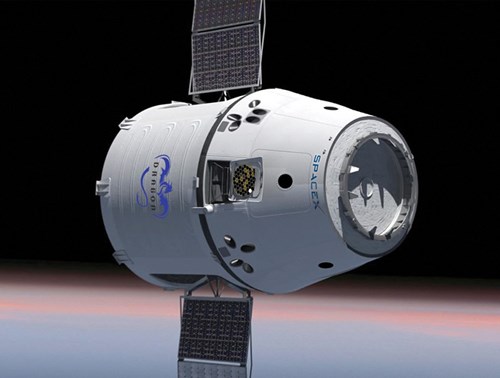Boeing, SpaceX picked to develop crewed spacecraft for NASA
Boeing will get $4.2 billion and SpaceX $2.6 billion to develop spacecraft transport U.S. crews to and from the International Space Station.
NASA reported on Sept. 16 that is has selected The Boeing Co. (Houston, Texas, USA) and SpaceX (Hawthorne, Calif., USA) to develop spacecraft to transport U.S. crews to and from the International Space Station (ISS). Boeing was awarded $4.2 billion to develop its CST-100 spacecraft; SpaceX was awarded $2.6 billion to develop its Crew Dragon spacecraft.
The U.S. has not had a spacecraft to transport U.S. crews to and from the ISS since its Space Shuttle fleet was retired in July 2011. The U.S. has since relied on Russian craft to transport astroanuts to and from the space station.
"From day one, the Obama Administration made clear that the greatest nation on Earth should not be dependent on other nations to get into space," says NASA Administrator Charlie Bolden. "Thanks to the leadership of President Obama, the hard work of our NASA and industry teams, and support from Congress, today we are one step closer to launching our astronauts from U.S. soil on American spacecraft and ending the nation’s sole reliance on Russia by 2017. Turning over low-Earth orbit transportation to private industry will also allow NASA to focus on an even more ambitious mission – sending humans to Mars."
These Commercial Crew Transportation Capability (CCtCap) contracts are designed to complete the NASA certification for human space transportation systems capable of carrying people into orbit. Once certification is complete, NASA plans to use these systems to ferry astronauts to the ISS and return them safely to Earth.
The contracts with Boeing and SpaceX include at least one crewed flight test per company with at least one NASA astronaut aboard to verify the fully integrated rocket and spacecraft system can launch, maneuver in orbit and dock to the space station, as well as validate all its systems perform as expected. Once each company’s test program has been completed successfully and its system achieves NASA certification, each contractor will conduct at least two, and as many as six, crewed missions to the space station. These spacecraft also will serve as a lifeboat for astronauts aboard the station.
NASA's Commercial Crew Program will implement this capability as a public-private partnership with the American aerospace companies. NASA's expert team of engineers and spaceflight specialists is facilitating and certifying the development work of industry partners to ensure new spacecraft are safe and reliable.
The U.S. missions to the ISS following certification will allow the station's current crew of six to grow, enabling the crew to conduct more research aboard the unique microgravity laboratory.
"We are excited to see our industry partners close in on operational flights to the International Space Station, an extraordinary feat industry and the NASA family began just four years ago," says Kathy Lueders, manager of NASA's Commercial Crew Program. "This space agency has long been a technology innovator, and now we also can say we are an American business innovator, spurring job creation and opening up new markets to the private sector. The agency and our partners have many important steps to finish, but we have shown we can do the tough work required and excel in ways few would dare to hope."
The companies will own and operate the crew transportation systems and be able to sell human space transportation services to other customers in addition to NASA, thereby reducing the costs for all customers.
By encouraging private companies to handle launches to low-Earth orbit -- a region NASA's been visiting since 1962 -- the nation's space agency can focus on getting the most research and experience out of America's investment in the International Space Station. NASA also can focus on building spacecraft and rockets for deep space missions, including flights to Mars.
Related Content
One-piece, one-shot, 17-meter wing spar for high-rate aircraft manufacture
GKN Aerospace has spent the last five years developing materials strategies and resin transfer molding (RTM) for an aircraft trailing edge wing spar for the Airbus Wing of Tomorrow program.
Read MoreInfinite Composites: Type V tanks for space, hydrogen, automotive and more
After a decade of proving its linerless, weight-saving composite tanks with NASA and more than 30 aerospace companies, this CryoSphere pioneer is scaling for growth in commercial space and sustainable transportation on Earth.
Read MorePEEK vs. PEKK vs. PAEK and continuous compression molding
Suppliers of thermoplastics and carbon fiber chime in regarding PEEK vs. PEKK, and now PAEK, as well as in-situ consolidation — the supply chain for thermoplastic tape composites continues to evolve.
Read MoreMaterials & Processes: Composites fibers and resins
Compared to legacy materials like steel, aluminum, iron and titanium, composites are still coming of age, and only just now are being better understood by design and manufacturing engineers. However, composites’ physical properties — combined with unbeatable light weight — make them undeniably attractive.
Read MoreRead Next
Composites end markets: Energy (2024)
Composites are used widely in oil/gas, wind and other renewable energy applications. Despite market challenges, growth potential and innovation for composites continue.
Read MoreFrom the CW Archives: The tale of the thermoplastic cryotank
In 2006, guest columnist Bob Hartunian related the story of his efforts two decades prior, while at McDonnell Douglas, to develop a thermoplastic composite crytank for hydrogen storage. He learned a lot of lessons.
Read MoreCW’s 2024 Top Shops survey offers new approach to benchmarking
Respondents that complete the survey by April 30, 2024, have the chance to be recognized as an honoree.
Read More



























